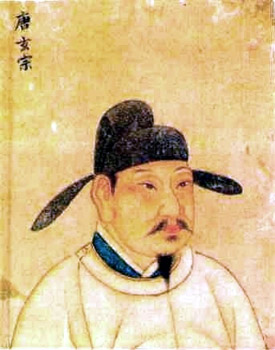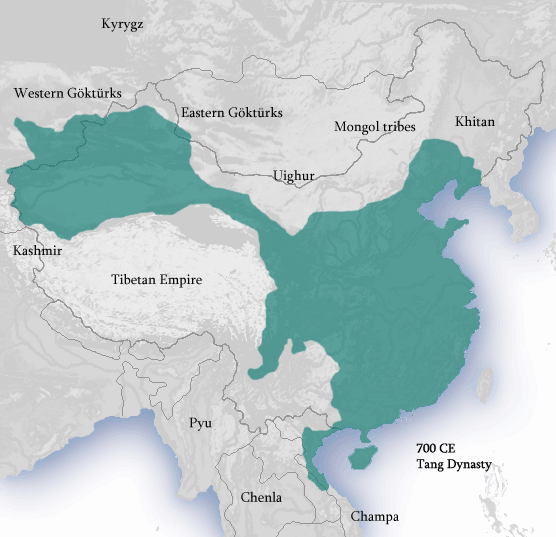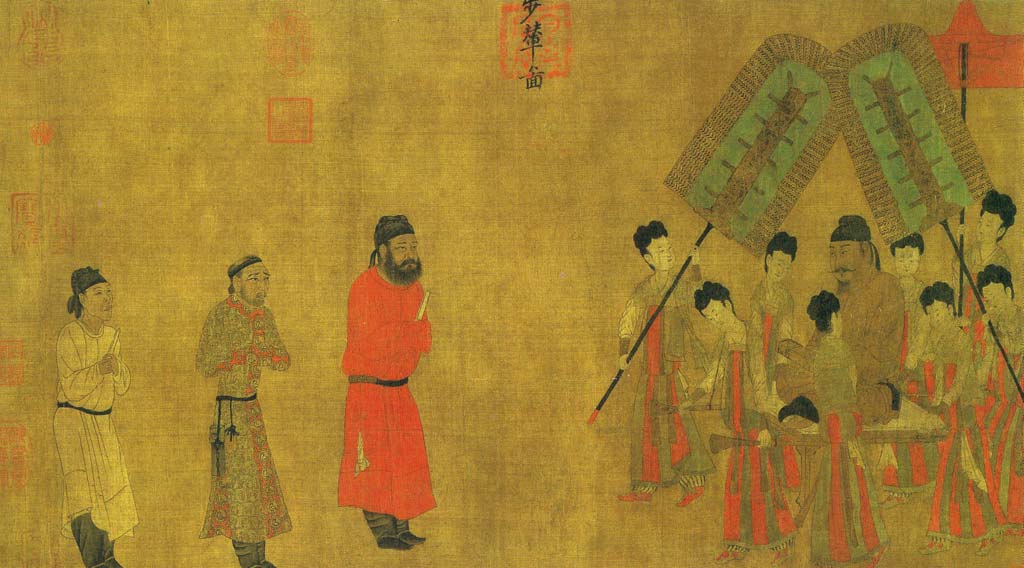The Sui Dynasty fell during its defeat in the attempted invasion Goguryeu in the Korean Peninsula. Numerous rallies and assassinations caused a Sui official who was posted at the border garrison of Taiyuan to turn his troops back to the capital. He then started the Tang Dynasty. Li Yuan, posthumously called Gaozu established the Tang Dynasty which many Chinese regarded as the most glorious dynasty ever.
Gaozu
It took 10 years before Gaozu’s last rival was defeated before the Tang established its Dynasty by putting the house in order. With the Emperor at its head the Tang established a pyramidal type of administration having two-policy formulating ministries, Department countries (xian) this has become the regional breakdowns designed to discourage the rise of regional powers, which persists up to this day.
Taizong
The succession to the imperial throne of Gaozu’s son Taizong saw the continuation of Tang’s successes. Taizong was regarded as the greatest emperors of China in China’s history where he established through the military, silk routes which then contributed to the influx of traders and the internalization of the Chinese society. The cities of Chang’an, Luoyang and Guangzhou (formerly Canton) became the center of trade which created different communities brought by foreign countries particularly those coming from Japan, Indonesia, Persia, India, and Malaysia who established trading and brought with them their arts, culture, religion, music, food, and artistic traditions. These then influenced China’s growing culture and contributed to the present Modern China.
The Spread of Buddhism
Buddhism also flourished during this time and many Chinese pilgrims who went to India for trade brought with them Buddhist scriptures and the renewal of their faith and increases many Chinese Buddhist texts.
The Reign of the Radiant Emperor, Xuanzong
The reign of Xuanzong (685 – 761) known as the Radiant Emperor is the summit of Tang’s Dynasty which many Chinese regarded. His reign saw the flourishing of the arts, music, dance, as well as religious diversity. The preoccupation of Emperor Xuanzong in the arts, music, Tantric Buddhism, and Taoism left the affairs of the state to his administrators which caused the rebellion of Lushan, one of his generals in the north, who was able to build a huge power base in the region and attacked the capital Chang’an. This capture led to Emperor Xuanzong flea of panic. The fighting lasted for ten years, causing massive death and dislocations of the people. This has become the beginning of the end of the Tang Dynasty.
During the 8th and 9th centuries the Tang Dynasty gradually weakened and created disputes, ransacking the capital and other cities, and the appearance of bandits. With the presence of wars and other internal disputes the Tang Dynasty slowly disintegrated.
Patriarchal Society
Women during the Tang Dynasty have been considered lucky because of the open-mindedness and liberal ideas at this instance. They were the luckiest women of all dynasties at this period. Before, society was male centered and the domination of men was well maintained and guaranteed by patriarchal customs such as the guidance of husband over wife, father and son, and other society ideals that they have to maintain and follow. Women have been given too many rules to follow or risk losing her husband, family, sons, because of certain regulations. In short, women of the past dynasties did not have much freedom, no voice in expressing themselves, no education, and no rights in deciding for their future. These customs changed during the Tang Dynasty.
During feudal times, a woman has no say as to their marriage where it was arranged for them by their father, brothers and other male members of the family, and it was expected that the woman would obey all the rules set by the male members. The woman is only allowed to be wed once even if she outlived her husband’s life. The husband alternatively, can leave his wife if the wife is guilty with the seven sins of being jealous, barren, unfilial, lascivious, stealing, meddling, or subject to a disease.
With a low familial and social status, these women do not have much chance in place among the male dominance of China’s society. The Tang Dynasty changed this and gave women the voices they deserved. Women had the same rights as the men and enjoyed the privilege of education, marriage choice, work and all other privileges excluded to men. They were also given a favorable law as to owning land, having the freedom to conduct business and other things that only their male counterparts could do in the previous dynasties.
 Women of the royal family, during the Tang Dynasty, were not subject to the marital restrictions or constraints much like the common people. In the Tang code a couple who wishes to divorce on the foundation of mutual approval and peaceful procedure were not punished. The Tang Dynasty attached great value to education and the women were given much value on this as their men.
Women of the royal family, during the Tang Dynasty, were not subject to the marital restrictions or constraints much like the common people. In the Tang code a couple who wishes to divorce on the foundation of mutual approval and peaceful procedure were not punished. The Tang Dynasty attached great value to education and the women were given much value on this as their men.
There were a lot of privileges women had during this dynasty and they were able to enjoy the freedom of their male counterparts. Marriage became an ideal and divorce was no longer shunned. Even the royal families enjoyed these privileges and granted the same rights that shook the foundations of traditional and feudal cultures as well as ethics. Women had the chance to learn politics, economics, history and military skills as well as participated in battles.
Being given such freedom the women of the Tang dynasty could express themselves freely as well as carry themselves in society without much propriety. They conducted themselves in business, expressed themselves, even sung loudly, and drank to their heart’s content and other things that they couldn’t do from the former dynasties.

